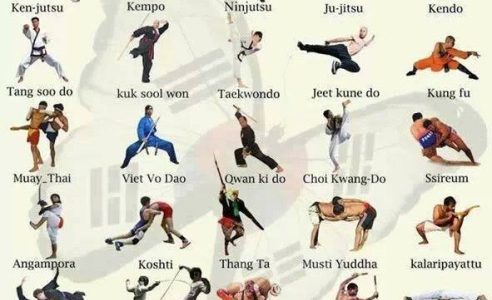The Development And Historical Context Of Martial Arts Worldwide
The Development And Historical Context Of Martial Arts Worldwide
Blog Article
Published By-Stevenson Ebsen
Martial arts have a fascinating history that spans centuries and continents. You could discover it intriguing exactly how ancient techniques like Shuai Jiao and Kalaripayattu prepared for contemporary battle techniques. These techniques not just highlight physical skills yet also reflect the societies that birthed them. As you discover their evolution, consider exactly how globalization has changed these typical kinds into hybrid styles. What influences do you assume have formed today's martial arts landscape?
Ancient Martial arts: The Structures of Battle
As you delve into the world of ancient martial arts, you'll discover the rich structures that formed combat methods throughout societies. Early methods focused on Self-Defense and survival, often incorporating strikes, grappling, and weaponry.
In ancient China, for instance, strategies like Shuai Jiao highlighted tosses and joint locks, while India's Kalaripayattu showcased agility and liquid activity. Japanese samurai established Kenjutsu, a refined swordsmanship that highlighted self-control and technique.
These martial arts served not just for fight but additionally as a way of individual advancement, instilling values like respect and determination. The blending of these techniques with time laid the groundwork for the diverse martial arts you see today, each showing the unique ideologies and demands of its society.
The Cultural Influence on Martial Arts Advancement
While martial arts typically reflect the useful demands of a society, they additionally personify the cultural worths and beliefs of their origins. When you explore different martial arts, you'll see just how they're affected by religion, philosophy, and social standards.
For example, the emphasis on respect and discipline in Japanese martial arts comes from Zen Buddhism and samurai culture. On the other hand, Brazilian Jiu-Jitsu advertises versatility and technique, formed by the demand for performance in a varied, multicultural environment.
You might locate that the routines, attires, and training methods reflect an area's background and identity. By understanding relevant internet site , you deepen your admiration of martial arts and their role fit human experiences across the globe.
Modern Adaptations and the Globalization of Martial arts
Martial arts have actually transformed dramatically in recent years, adjusting to contemporary society and global influences. You'll notice that standard forms have combined with contemporary strategies, producing hybrid styles like MMA. These adjustments deal with varied target markets, making martial arts accessible and appealing globally.
With the rise of social networks and electronic systems, you can find tutorials and competitors from all corners of the world, damaging geographical barriers. This globalization has actually resulted in a common admiration for different techniques, from Brazilian Jiu-Jitsu to Taekwondo.
As you engage with these arts, you'll realize they're not almost fight; they advertise health and fitness, technique, and mental wellness.
Eventually, contemporary adaptations have actually enriched the martial arts landscape, making it a vibrant and developing technique.
Final thought
In discovering the history and evolution of martial arts, you reveal an interesting mix of techniques, societies, and ideologies. From ancient self-controls like Shuai Jiao and Kalaripayattu to the contemporary versatility seen in MMA, martial arts show mankind's pursuit for Self-Defense and personal growth. As you involve with these practices, you not only gain abilities yet likewise a deeper appreciation for the diverse traditions that form our world today. So, proceed your journey and accept the art of battle!
